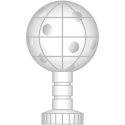Yūto Totsuka
| Data i miejsce urodzenia | ||||||||||||||||||||||||||||||||||||||||||||||||||||
|---|---|---|---|---|---|---|---|---|---|---|---|---|---|---|---|---|---|---|---|---|---|---|---|---|---|---|---|---|---|---|---|---|---|---|---|---|---|---|---|---|---|---|---|---|---|---|---|---|---|---|---|---|
| Klub | Yonex | |||||||||||||||||||||||||||||||||||||||||||||||||||
| Debiut w PŚ | ||||||||||||||||||||||||||||||||||||||||||||||||||||
| Dorobek medalowy | ||||||||||||||||||||||||||||||||||||||||||||||||||||
| ||||||||||||||||||||||||||||||||||||||||||||||||||||
Yūto Totsuka (jap. 戸塚 優斗 Totsuka Yūto; ur. 27 września 2001 w Kanagawie) – japoński snowboardzista specjalizujący się w half-pipe'ie. Po raz pierwszy na arenie międzynarodowej pokazał się 31 stycznia 2016 roku w Sapporo, gdzie w zawodach FIS Race zajął szóste miejsce. W zawodach Pucharu Świata zadebiutował 8 września 2017 roku w Cardronie, wygrywając rywalizację w halfpipe’ie. Pokonał tam swego rodaka, Ayumu Hirano i Szwajcara Patricka Burgenera. Był to jego pierwszy oficjalny start poza granicami Japonii. W marcu 2017 roku zdobył także mistrzostwo kraju w tej konkurencji. W 2018 roku wystąpił na igrzyskach olimpijskich w Pjongczangu, zajmując jedenaste miejsce. Rok później, na mistrzostwach świata w Park City zdobył srebrny medal, ulegając jedynie Australijczykowi Scotty’emu Jamesowi. W styczniu 2019 oraz 2020 roku, podczas zawodów X-Games rozgrywanych w amerykańskim Aspen, zdobył srebrne medale, ulegając dwukrotnie Jamesowi[1][2]. W styczniu 2021 roku podczas Winter X Games 25 był już najlepszy, zdobywając tym samym złoty medal[3]. Dwa miesiące później zdobył złoty medal podczas mistrzostw świata w Aspen.
W sezonach 2017/2018 oraz 2018/2019 zdobywał Małe Kryształowe Kule za zwycięstwo w klasyfikacji halfpipe’u.
Osiągnięcia
Igrzyska olimpijskie
| Miejsce | Dzień | Rok | Miejscowość | Konkurencja | Zwycięzca |
|---|---|---|---|---|---|
| 11. | 14 lutego | 2018 | Halfpipe | ||
| 10. | 11 lutego | 2022 | Halfpipe |
Mistrzostwa świata
| Miejsce | Dzień | Rok | Miejscowość | Konkurencja | Zwycięzca |
|---|---|---|---|---|---|
| 2. | 8 lutego | 2019 | Halfpipe | ||
| 1. | 13 marca | 2021 | Halfpipe | – |
Puchar Świata
Miejsca w klasyfikacji generalnej AFU[4]
- sezon 2017/2018: 2.
- sezon 2018/2019: 3.
- sezon 2019/2020: 2.
- sezon 2020/2021: 2.
- sezon 2021/2022: 24
Miejsca na podium w zawodach
 Cardrona – 8 września 2017 (halfpipe) – 1. miejsce
Cardrona – 8 września 2017 (halfpipe) – 1. miejsce Secret Garden – 21 grudnia 2017 (halfpipe) – 3. miejsce
Secret Garden – 21 grudnia 2017 (halfpipe) – 3. miejsce Snowmass – 13 stycznia 2018 (halfpipe) – 3. miejsce
Snowmass – 13 stycznia 2018 (halfpipe) – 3. miejsce Laax – 20 stycznia 2018 (halfpipe) – 2. miejsce
Laax – 20 stycznia 2018 (halfpipe) – 2. miejsce Secret Garden – 21 grudnia 2018 (halfpipe) – 3. miejsce
Secret Garden – 21 grudnia 2018 (halfpipe) – 3. miejsce Laax – 19 stycznia 2019 (halfpipe) – 2. miejsce
Laax – 19 stycznia 2019 (halfpipe) – 2. miejsce Calgary – 15 lutego 2019 (halfpipe) – 1. miejsce
Calgary – 15 lutego 2019 (halfpipe) – 1. miejsce Mammoth Mountain – 9 marca 2019 (halfpipe) – 1. miejsce
Mammoth Mountain – 9 marca 2019 (halfpipe) – 1. miejsce Copper Mountain – 14 grudnia 2019 (halfpipe) – 2. miejsce
Copper Mountain – 14 grudnia 2019 (halfpipe) – 2. miejsce Secret Garden – 22 grudnia 2019 (halfpipe) – 2. miejsce
Secret Garden – 22 grudnia 2019 (halfpipe) – 2. miejsce Laax – 18 stycznia 2020 (halfpipe) – 2. miejsce
Laax – 18 stycznia 2020 (halfpipe) – 2. miejsce Mammoth Mountain – 31 stycznia 2020 (halfpipe) – 1. miejsce
Mammoth Mountain – 31 stycznia 2020 (halfpipe) – 1. miejsce Laax – 23 stycznia 2021 (halfpipe) – 1. miejsce
Laax – 23 stycznia 2021 (halfpipe) – 1. miejsce Aspen – 21 marca 2021 (halfpipe) – 1. miejsce
Aspen – 21 marca 2021 (halfpipe) – 1. miejsce Copper Mountain – 11 grudnia 2021 (halfpipe) – 3. miejsce
Copper Mountain – 11 grudnia 2021 (halfpipe) – 3. miejsce
Przypisy
- ↑ Yuto Totsuka wins halfpipe silver at Winter X Games. japantimes.co.jp. [dostęp 2019-03-31]. (ang.).
- ↑ Scotty James bests Yuto Totsuka to win third X Games Aspen gold in superpipe. summitdaily.com, 2020-01-23. [dostęp 2020-02-08]. (ang.).
- ↑ X Games Aspen 2021 Day Three News and Results. ESPN, 2021-02-01. [dostęp 2021-02-01]. (ang.).
- ↑ Klasyfikacja generalna dyscyplin freestyle (Halfpipe, Slopestyle i Big air)
Linki zewnętrzne
- Profil na stronie FIS (ang.)
Media użyte na tej stronie
Autor: Thadius856 (SVG conversion) & Parutakupiu (original image), Licencja: CC0
transparent snowboard
Olympic Rings without "rims" (gaps between the rings), As used, eg. in the logos of the 2008 and 2016 Olympics. The colour scheme applied here pertains to the 2016 Olympics in Rio de Janeiro.
Olympic Rings without "rims" (gaps between the rings), As used, eg. in the logos of the 2008 and 2016 Olympics. The colour scheme applied here pertains to the 2016 Olympics in Rio de Janeiro.
The flag of Navassa Island is simply the United States flag. It does not have a "local" flag or "unofficial" flag; it is an uninhabited island. The version with a profile view was based on Flags of the World and as a fictional design has no status warranting a place on any Wiki. It was made up by a random person with no connection to the island, it has never flown on the island, and it has never received any sort of recognition or validation by any authority. The person quoted on that page has no authority to bestow a flag, "unofficial" or otherwise, on the island.
Autor: Fanmalysza, own work with Inkscape, GIMP and Nero PhotoSnap Essentials, edited by Micgryga with Adobe Photoshop, Licencja: CC BY-SA 4.0
Srebrny medal FIS
Autor: Fanmalysza, own work with Inkscape and Nero PhotoSnap Essentials, edited by Micgryga with Adobe Photoshop, Licencja: CC BY-SA 4.0
Złoty medal FIS
Flag of New Zealand. Specification: http://www.mch.govt.nz/nzflag/description.html , quoting New Zealand Gazette, 27 June 1902.
Flag of Canada introduced in 1965, using Pantone colors. This design replaced the Canadian Red Ensign design.












